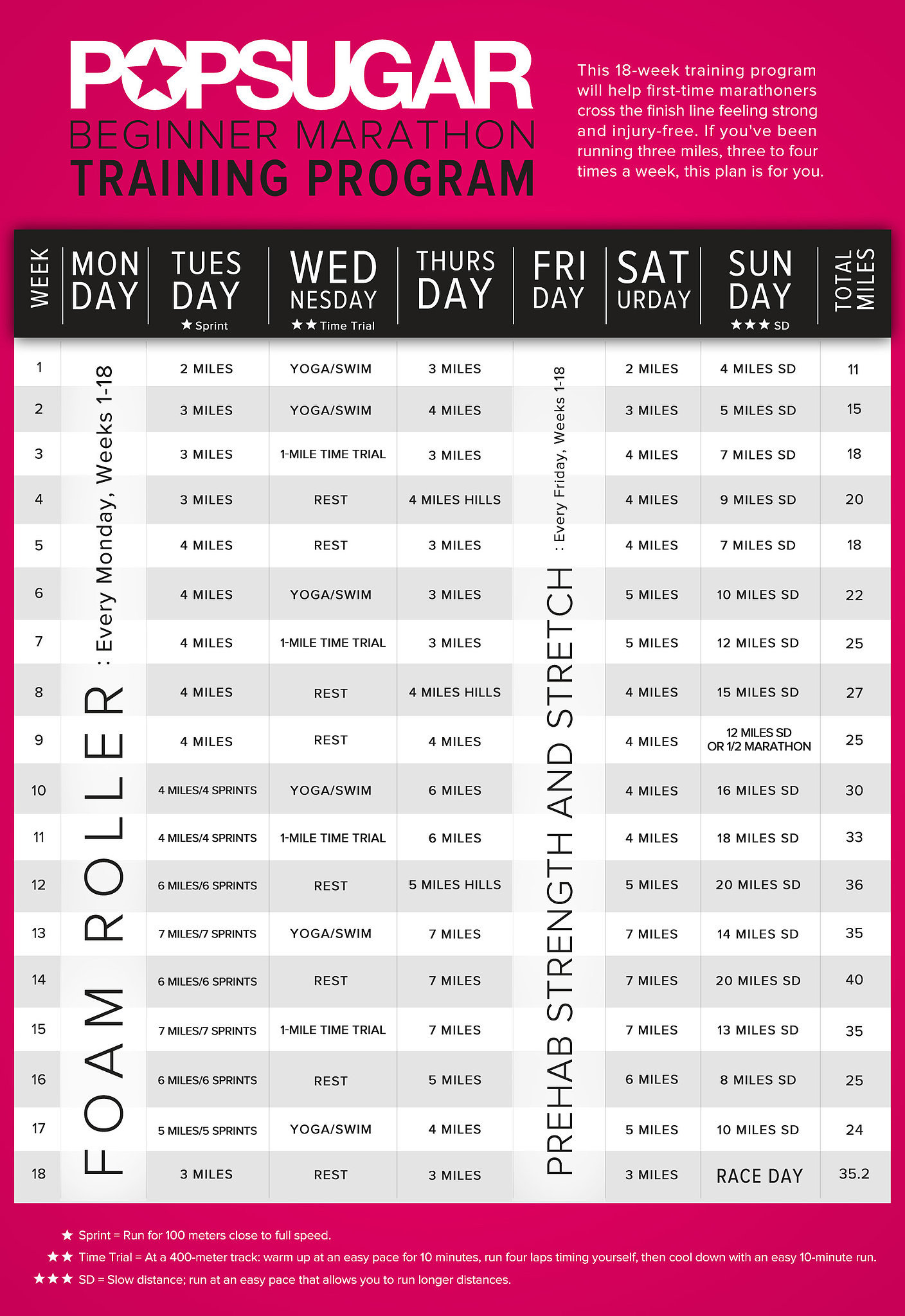If running a marathon is on your bucket list, we have an 18-week plan designed specifically to help a first-timer train for running 26.2 miles. This program, created for those who have been running for at least one year, will help you build endurance and mileage. Before beginning this program, you should be running three or four times a week for two to three miles on each run.
The weekly mileage starts at 11 miles per week, peaking at 40 weekly miles during week 14. Long runs, the base of marathon training, start at four miles and grow to 20 miles.

Foam roller: Giving yourself a massage every Monday with a foam roller will help prevent overuse injuries that can accompany training for a race. Plus, it just feels good. Here’s a foam-rolling routine that will certainly hit all your sore spots.
Yoga/swim: This is a day of cross training that is non-weight-bearing on the body such as swimming, yoga, core strengthening, Pilates, biking, or simply stretching. Duration is about one hour or less.
Rest: This is a complete rest day that allows stretching, foam rolling, and/or core-strengthening exercises while allowing the body time to recover.
One-mile time trial: At a 400-meter track, after a 10-minute warmup at an easy pace, time yourself for four laps. Cool down with an easy 10-minute run. This one-mile time will improve over the course of your training and allow you to gauge your weekly running pace. Aim to run between one and two minutes slower than your time-trial pace on your average run days. If you ran the mile run in eight minutes, then try to keep a nine- to 10-minute mile pace on your next runs.
Hills: This run should be done where there are intervals of hills incorporated in the run and not just a flat distance. It is important to incorporate these types of grade inclines into the running routine to build strength and endurance in the legs while running longer distances.
Sprints: Incorporate sprints during runs to improve speed and increase fast-twitch muscle fibers. A sprint should be about 100 meters and should be close to full speed. Slowly bring the speed down after 100 meters, and continue at a moderate to easy pace. You can space your sprint intervals out as you like, but try to complete them all before the run is over.
Slow distance (SD): Run at an easy pace that allows you to run longer distances at a comfortable speed. These runs are meant to build endurance of slow-twitch muscle fibers and allow the body to adjust to the repetition and impact of running.
Prehab stretch and strengthen (PSS): To stay strong and healthy during training, commit to doing this injury-prevention workout once a week. The strength-training moves, focusing on the core and glutes, along with the prescribed stretches will help combat the wear and tear of your marathon training.
Postrun stretch routine: Hold each stretch for 30 seconds to one minute after a running workout. Stretch your hamstrings, piriformis, hip flexors, calves, quads, glutes, and lower back.
Click here for a printer-friendly version of the training plan that requires less colored ink.
Source: Tackle 26.2 With Our Beginner Marathon Training Plan : PopSugar





